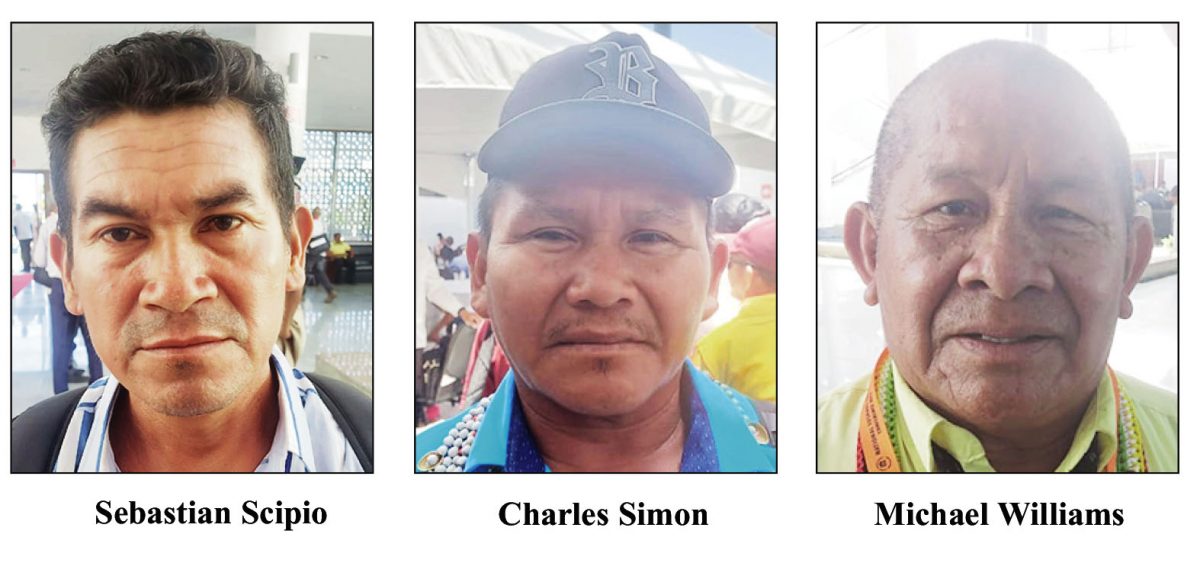Several Toshaos from regions eight and nine are complaining about the scarcity of cassava, a staple in Indigenous communities and Minister of Agriculture, Zulfikar Mustapha says he is aware of the situation and steps are being taken.
During that National Toshaos Conference held in Georgetown last week, the village leaders who spoke to Stabroek News blamed changing weather patterns and foraging wildlife (tapirs or bush hogs) as the primary causes for the problems with their cassava crop. The scarcity of the root crop, according to the Toshaos, is adding to an already high cost of living in the far-flung Indigenous communities.
Toshao Charles Simon from Awarewaunau, Deep South Rupununi, Region 9 told SN that floods earlier in the year had destroyed most of the crops for his village. After the floods receded, farmers replanted the root crop but are now experiencing the El Nino weather system, and the excessive dryness is hastening the rotting of the crop. Simon also attributed the cassava scarcity to foraging wildlife, a possible consequence of El Nino’s larger impact deeper in the rainforest. Simon said that the food security situation in his village right now is critical. Because of low cassava production, cassava bread and farine production has been significantly scaled back.
Toshao Michael Williams of Annai, North Rupununi, Region Nine said after the floods, cassava crops were replanted but these would not be available for another three months. Williams told SN that the shortage of cassava has also sent the prices in Annai for farine, cassava bread and casareep skyrocketing. Farine, where available, is consumed by families but is hardly being bought due to cost. Williams said a few months ago, farine was sold at $150/160 per pound, now the same pound of farine costs $400/500.
Another Toshao, Sebastian Scipio of Tuseneng, Region Eight said villagers have to travel to other villages to purchase cassava bread and casareep. Casareep is mostly produced and sold for income generation. A large bottle is sold for $2000, whereas a few months ago, the cost was $1,200/$1,500.
Farming primarily shelters low to non-income families from consumer activities but the shortage of cassava has left these families to face the full brunt of price inflation. Williams, Simon and Scipio have told SN that most of their constituents are farmers but because of the scarcity of cassava they now have to depend on shops. Scipio said in Region Eight, for example, the bad condition of the roads has forced truck operators to increase the price of items sold. Williams of Annai said shop prices continue to climb because of insufficient commodities on shop shelves. Meanwhile, Simon said transportation costs to and from Lethem have doubled the cost of goods making these almost prohibitive to villagers.
All three Toshaos also said there are no job opportunities in their communities and this is a major concern since this decreases the consuming population, whilst simultaneously, adding to the economic burden of the community. According to Simon, only the Community Support Officers, Toshaos and pensioners earn income in his village. The Toshaos are asking what will their constituents do for the next three months? The general economic overview provided by the Toshaos was shared by other Toshaos of other Indigenous communities as reported in the Stabroek News serial, “How the cost of living is affecting people – Part 39”, Monday, September 4, 2023 edition.
Meanwhile, Minister of Agriculture, Mustapha told this newspaper on Tuesday in a telephone interview that since 2022, his ministry has been working with all the villages, especially in Region 9 where cassava sticks were given out. He recalled that at the National Toshaos’ Conference, when he was addressing Toshaos on the matter, he had announced that he had supplied cassava sticks to Region Nine and other regions. However, he added that, “this time around I’m trying to supply into each of the sub-districts, for example Region Nine has five sub districts, we can work with the communities there and I will continue to supply cassava sticks to them because in the next crop season, November, I’m working to ensure that they have got enough, so we can continue to supply these things to them.” He noted that farmers can’t plant now because the next crop season is in November.
Efforts by this newspaper to solicit a comment from the Ministry of Amerindian Affairs on the cassava situation in the hinterland proved unsuccessful. (Subhana Shiwmangal)






